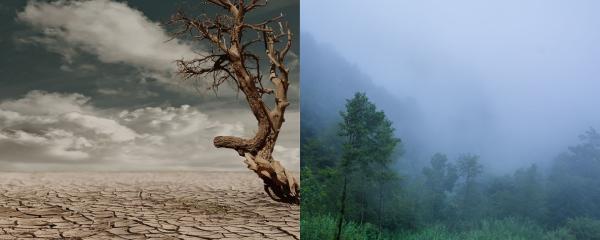
IIT Palakkad study shows how different indices used to predict drought combined with effects fof climate change can lead to different climate predictions for the future

IIT Palakkad study shows how different indices used to predict drought combined with effects fof climate change can lead to different climate predictions for the future
Researchers from IIT Kanpur extract a mineral from mutton bones to drive light-based chemical reactions.
The first week of October is observed in India as the ‘Wildlife Week’.
“What had that flower to do with being white
The wayside blue and innocent heal-all?
What brought the kindred spider to that height,
Then steered the white moth hither in the night?
What but design of darkness to appall?
If design govern a thing so small.”
--Robert Frost, in his poem Design
In a recent study, published in the journal Emerging Microbes & Infections, a multi-national team of researchers have traced the trail of the Zika virus from the forests of Africa to India and other Asian countries.
In a recent finding that could unveil a hitherto unknown function of the South Asian monsoon, researchers from Germany and Cyprus have described how the South Asian monsoon plays an active role in regulating the levels of pollutants in the atmosphere.
Researchers from ATREE study the factors affecting the farmer's choice of crops and the impact on water resources in the Arkavathy river basin.
In a collaborative study, researchers from the USA, India and China detailed the health risks posed by the toxic emissions from power plants and their impacts on the mortality and life expectancy of people living in these countries.
Researchers from DST's Centre for Policy Research, the IISc, and CSIR have examined the popular measurement standards used in research and their trustworthiness.
Head and neck cancer is one among the monst commonly diagnosed types of carcinomas in the world. Studies show that in India, people from the northeastern states--Assam, Manipur, Mizoram, Tripura and Nagaland -- have the highest incidence of head and neck cancers in the country. Novel study suggests biomarkers for early, efficient and comprehensive diagnosis of the disease.
Rice is the most widely consumed staple cereal in Asia and is the agricultural commodity with the third-highest worldwide production. Paddy fields are at the eye of a storm as they are a significant contributor of greenhouse gases (GHG) like methane that are known to contribute towards global warming. The warm, waterlogged soil conditions in rice fields promote the growth of microorganisms that release carbon-dioxide and transform it into methane. One way to manage this is by increasing the ability of the soil to store more organic carbon.